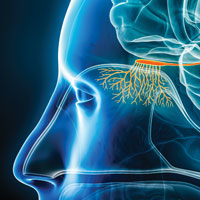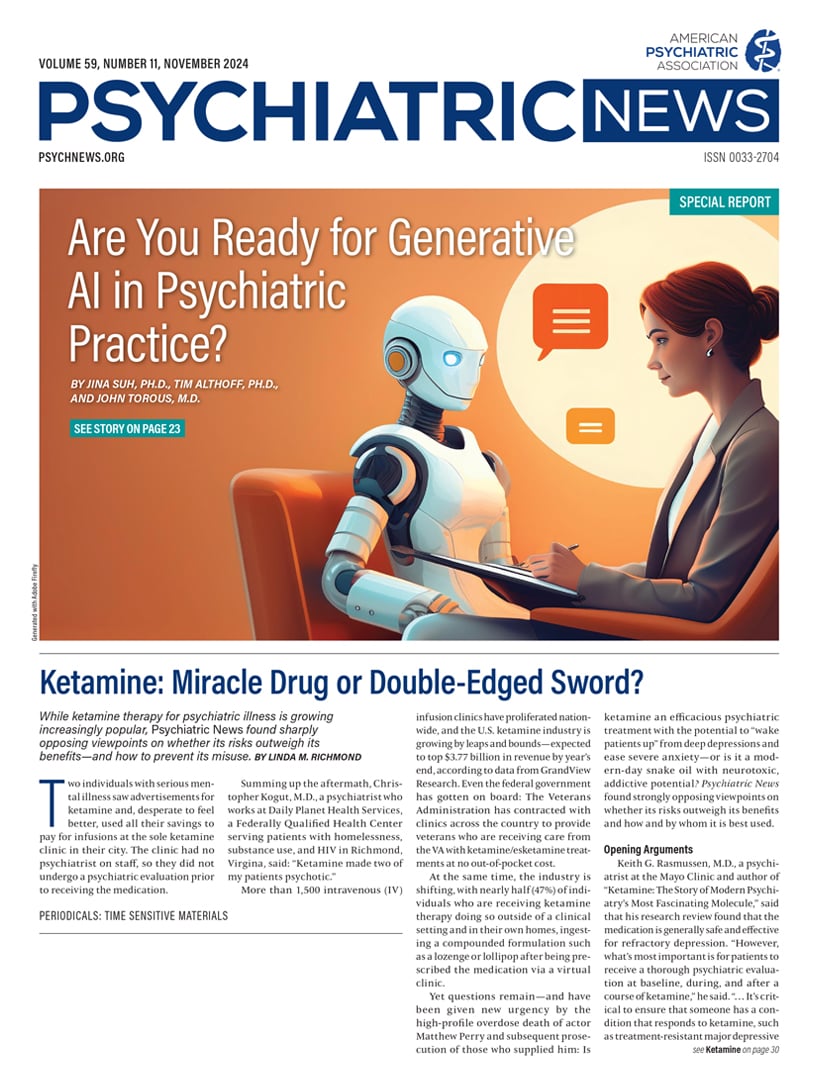Tea, Red Wine, Berries Linked to Lower Risk of Dementia
Good news for tea enthusiasts and red-wine sippers alike, especially if they also enjoy berries: A
study in
JAMA Network Open suggests that the flavonoids in these foods may lower the risk of dementia.
An international team of researchers examined data from 121,986 adults ages 40 to 70 who were recruited into the UK Biobank between 2006 and 2010, with a mean follow-up of a little longer than nine years. Participants completed periodic dietary assessments, which the researchers used to determine a “flavodiet” score by summing up how many daily servings of flavonoid-rich foods the individuals ate, including tea (black and green), red wine, apples, berries, grapes, oranges, grapefruit, sweet peppers, onions, and dark chocolate. Researchers then divided the individuals into quintiles according to their flavodiet scores.
During follow-up, 882 individuals had a diagnosis of dementia. Among all participants, those in the highest flavodiet quintile had a 28% lower risk of dementia compared with those in the lowest quintile. Among participants with depressive symptoms, high genetic risk for dementia, or hypertension, those in the highest quintile had a 48%, 43%, and 30% lower risk of dementia, respectively, than those in the lowest quintile. Overall, the researchers observed the greatest risk reduction in participants who consumed at least two of the following per day: five servings of tea, one serving of red wine, or one-half serving of berries.
“These findings are supported by our analyses of flavonoid subclasses showing that the anthocyanin, flavan-3-ol, and flavone subclasses, of which tea, red wine, and berries are among the top contributors, had the strongest associations with dementia risk” the researchers wrote. “Thus, modest changes to the diet could increase flavonoid levels to that required to lower dementia risk.”
Psychiatrists Interested in Prescribing PrEP, but Need Training
More than half of psychiatrists are interested in prescribing HIV pre-exposure prophylaxis (PrEP) for their patients, but limited knowledge of PrEP is a significant barrier to doing so, according to a
study in
Psychiatric Research & Clinical Practice.
Researchers at the University of Chicago and colleagues analyzed responses from 880 psychiatrists who participated in a survey between November 2022 and October 2023 about their experience, knowledge, and preferences regarding prescribing PrEP. They found:
•
53.9% of psychiatrists were interested in prescribing PrEP
•
19% had received a request for PrEP from a patient
•
17.3% had prescribed PrEP
All respondents endorsed at least one individual-level barrier to PrEP implementation, with 76.3% reporting that they had limited knowledge about PrEP. In addition, 59.5% reported the need for follow-up care as an individual barrier, while 63.1% indicated that they would prefer a model of care in which they would write the initial prescription for PrEP with prompt follow-up with primary care or specialists in infectious disease.
All respondents endorsed at least one system-level barrier to PrEP implementation as well, with 48% reporting administrative requirements from insurers and 43% reporting limited time during visits to discuss both PrEP and the patient’s psychiatric care needs.
Overall, 67.3% of respondents said they were interested in further training about PrEP.
“Many aspects of the clinical management of PrEP prescription are protocol-based and can be easily integrated into psychiatric care, leveraging existing workflows,” the researchers wrote. “Training about PrEP for HIV prevention that is specifically focused on the needs of psychiatrists should be developed to support PrEP prescription by psychiatrists to increase access for patients vulnerable to HIV.”
Study Analyzes Economics of Mobile Health Units for Harm Reduction
Running a mobile substance use treatment unit costs $14,464 per month, much of that attributable to staffing, researchers in the HEALing Communities Study
reported in the
Journal of Substance Use and Addiction Treatment.
As part of the HEALing Communities Study, four communities in Massachusetts implemented mobile units offering overdose education, naloxone distribution, and medication for opioid use disorder (OUD) in an array of services tailored to each community. The researchers collected resource use data from invoices to estimate the direct economic costs of running these units from August 2020 through June 2022.
The median startup cost of each unit was $59,762, with 80% of those costs tied to buying the vehicle. The monthly costs were $5,000 for each of two urban communities that offered linkage to OUD services via telehealth, $23,000 for an urban community that also provided in-person prescribing for medications for OUD, and $28,000 for a rural community.
“Although this might seem like a considerable expense, such mobile units have the potential to serve a large number of individuals, and their services can help avert costly hospitalizations, emergency department care, and other societal costs such as those of an overdose [which are] estimated at around $4,000,” the researchers wrote.
Overall, staffing the units accounted for roughly 85% of the total operating costs.
The researchers noted that although the high cost of purchasing a van may dominate decision-making, the ongoing personnel costs associated with operating the unit emerged as a paramount issue.
“This underscores the need to expand the focus beyond only the initial high startup costs, such as a vehicle purchase, to recognize how pivotal ongoing personnel costs are for sustaining such mobile units,” they wrote.
Neuropsychiatric Symptoms More Likely in Siblings of Kids With Tourette’s
Siblings of children with Tourette’s syndrome and severe tics may have an increased risk of having symptoms of autism spectrum disorder, according to a
study in
JCPP Advances. The study also found an increased risk of symptoms of attention-deficit/hyperactivity disorder (ADHD) and oppositional defiant disorder among sisters of children with Tourette’s whose tics are more severe.
Researchers at University Hospital in Lausanne, Switzerland, and colleagues examined data from 196 children and their 220 siblings enrolled in the European Multicenter Tics in Children Study. The data were collected from parents and their children during a baseline hospital visit. Parents were asked to complete a series of questionnaires regarding their child’s neuropsychiatric symptoms.
At baseline, researchers assessed the severity of motor and vocal tics in the children with Tourette’s using the Yale Global Tic Severity Scale. They also collected information from the parents regarding symptoms of autism spectrum disorder, ADHD, and oppositional defiant disorder in the children’s siblings, including using Autism Spectrum Screening Questionnaire (ASSQ).
The researchers found that greater tic severity in children with Tourette’s was associated with higher ASSQ total scores in their siblings compared with siblings of children with lower tic severity.
“This finding suggests a shared genetic predisposition of [Tourette’s syndrome] and [autism spectrum disorder] symptoms across siblings, or at least a sibling profile of impaired social and communicative competences,” the researchers wrote.
They also found that sisters of children with higher tic severity had higher ADHD and oppositional defiant severity scores compared with sisters of children with lower tic severity, whereas they did not observe this association in brothers. The researchers wrote that this association in girls “may be mediated by the stress induced in the family environment due to tics and requires more exploration.”
Microplastics Found in Olfactory Bulbs of Deceased Adults
Researchers at the University of São Paulo and colleagues have found microplastics in the olfactory bulbs of eight deceased adults, suggesting that microplastics may enter the brain through the olfactory pathway. The researchers
reported their findings in
JAMA Network Open.
The researchers analyzed olfactory bulb tissues from 15 deceased adults who had undergone routine autopsies. The deceased individuals were between 33 and 100 years old and had been residents of São Paulo for more than five years before their deaths.
The researchers detected microplastics in the olfactory bulbs of eight of the deceased individuals, ranging from one to four pieces. Of these microplastics, 75% were particles (mainly irregularly shaped fragments but also some spheres), while 25% were fibers, defined as having a length-to-width ratio exceeding three.
The most common polymer was polypropylene, found in 43.8% of samples, followed by polyamide, nylon, and polyethylene vinyl acetate (12.5%) and polyethylene, perlon polyamide, and woolpolypropylene (6.3%).
“Our data support the idea that the olfactory pathway is an important entry site for environmental air pollutants,” the researchers wrote. “Considering the potential neurotoxic effects caused by MPs in the brain, and the widespread environmental contamination with plastics, our results should raise concern in the context of increasing prevalence of neurodegenerative diseases.”
Smoking Cessation Fatigue Does Not Mean People Stop Trying to Quit
Many people who smoke make several quit attempts before they quit for good. This can lead to a feeling of mental and emotional tiredness called “cessation fatigue.”
It may seem intuitive that the more cessation fatigue people have, the more likely they would stop trying to quit. However, a
study in
Addictive Behaviors suggests otherwise: In examining data from 4,139 adult smokers who participated in the International Tobacco Control Four Country Smoking and Vaping Survey (ITC 4CV), researchers at Deakin University in Geelong, Australia, and colleagues found that people who reported at least some cessation fatigue were more likely to make a quit attempt than those who reported no cessation fatigue.
For the ITC 4CV, participants were asked at baseline to rate how tired they were of trying to quit smoking. At two-year follow-up, they were asked if they had attempted to stop smoking since the previous survey.
Among all participants, 42.3% made a quit attempt between surveys. Those who reported any level of cessation fatigue on the first survey were more likely to try to quit in the interim than those who reported being “not at all tired,” with individuals who rated themselves as “extremely tired” reporting the highest attempt rates. This association held true after adjusting for sociodemographic and smoking-related variables.
“Individuals who experience more [cessation fatigue] may be those who have greater motivation to quit in the first place, but the experienced difficulty to successfully quit is more likely to be seen as fatigue if the underlying motivation to quit remains strong,” the researchers wrote. “Those reporting [cessation fatigue] might be allowed a bit of time to recover, but then should be supported to try again when they are ready.”






